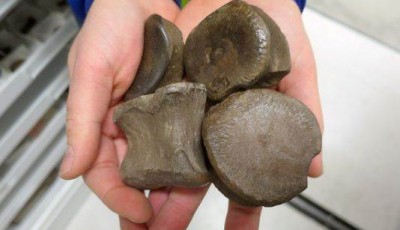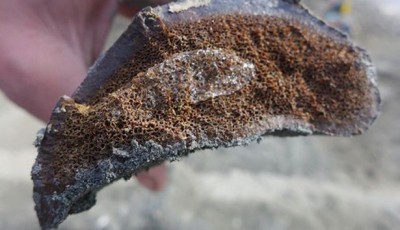The Color of Extinct Animals: Fossilized Pigments Reveal What Creatures Looked
On Monday, they for the first time ever revealed the fur color of extinct mammals: 2 of the earliest-known bats known as Palaeochiropteryx and Hassianycteris.
They discovered that the bats were reddish-brown in colour by studying microscopic spherical and oblong-shaped structures in the fossils.
Fossil melanosomes were first described in a fossil feather in 2008 by Jakob Vinther, a molecular paleobiologist at the University of Bristol and the senior author of the current study.
Since the melanosomes differ by their shape to the type of melanin produced, researches hypothesized that the melanosome appearance could be used to infer what color the animal was.
“Very importantly, we see that the different melanins are found in organelles of different shapes: reddish melanosomes are shaped like little meatballs, while black melanosomes are shaped like little sausages and we can see that this trend is also present in the fossils“, Vinther said in a statement. Melanin is the pigment that determines the colors of hair, eyes, skin and even feathers. A few have suggested that the structures thought to be preserved melanosomes – the compartments that make and store melanin within cells – are actually fossilized bacteria.
In the study, researchers subjected modern hair and feather samples to the high temperatures and pressures fossils would undergo.
Scientists at Bristol University in England carried out the study, which showed that the fossil from the Eocene Epoch (33.9-56 million years ago) still contains remnants of melanin, a substance which dictates the colour of our skin.
“This is a great leap forward in our understanding of how fossils are preserved”.
The research was published this week in the Proceedings of the National Academy of Sciences.
An worldwide team of scientists from the University of Bristol in the United Kingdom and Virginia Tech in the United States made use of this method in identifying the color of two extinct bat species.
The team of researchers also used an instrument called a time-of-flight secondary ion mass spectrometer to identify the molecular makeup of the fossil melanosomes in order to compare them with modern ones.
Geologists have now discovered a way to determine the color of prehistoric animals based on a few fossilized microscopic evidence dating back to 50 million years.
“I think we’re just scratching the surface in our ability to extract information like this from the fossil record”, Colleary said.
We’ve come across many editions of it. In Jurassic Park, T-rex contains a grayish-brown color; in The Land Before Time, they are definitely color green; Barney is purpleness.
“Biologists know a lot about living animals because of color: what sort of environment they live in, how they protect themselves or how they attract mates”, Virginia Tech paleobiologist Caitlin Colleary said.
“Colour recognition was an important part of that process, and it goes far back in the history of animals”.












